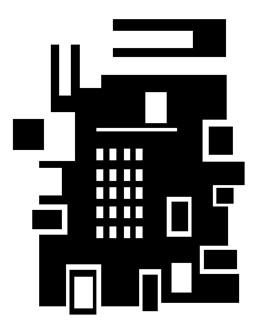Jan 02, 2026
Jan 02, 2026
In the last blog, A V. Dynamic Market, there was talk of the market in India. With the market also come consumers. Thus this piece is about consumers, and what to expect from them. Sure guides to this behavior are the signs seen in stores around India. Variations of ‘the consumer is the reason for our existence’ are on display. Side by side are also variations of ‘no credit’!
This points to two things. That the consumer is very fussy. And that the consumer is quick to take advantage. Which is another way of saying that the consumer is often well-informed! And if the consumer is not well-informed, he or she soon will be.
Now the habit of the consumer is: that he or she likes to buy, if at all, ‘concrete things’. TVs, phones, books, consumables – all have a market. Esoteric things like ‘design services’ or ‘intangible products’ do not. So what’s to be done?
Circles are one possible answer. A circle of friends, fellow professionals and experts. A circle that is exclusive because it doesn’t let anyone enter, who doesn’t have the passkey. What is this passkey?
It may be something as simple as paying for services. It may be something more complicated, and perhaps more valuable. Like for example contributing in intellectual property. Or bringing or introducing a new set of experts and people.
Proving Worth
Sisyphus rolled a stone up a hill, only to have the stone roll down once again at the summit. This was his fate, to endlessly keep on rolling up the stone, and then again. Who was the watcher?
In the same way the market in India, for a designer, may seem like a Sisyphian task. The only ones winning are the ones who write the story.
So what does it take to succeed? A designer or new entrant is not working in isolation. Rather the picture might be of a web, or maze. There are multiple entries but only one exit.
It is easy to get lost in a dead end, or a passage that doubles back on itself. In Indian music there is place for passages that double back on themselves. Thus it might be for the new entrant. Company missions and visions are constantly revised, adapting to the changing seasons.
~*~
Now to questions of scale. Can a single person make a difference? It seems that here, as in all other cases, it is values that prevail. A ‘good’ company – that provides value and benefit – is much more likely to succeed than a company that looks only at the ‘profit’ motive. Perhaps not in the short run, but definitely in the long one.
But what to do if competitors are aggressive?
It is easy, in the hustle and bustle of the crowded marketplace, to get carried away by what ‘others’ are doing.
~*~
But some time off from this topic. To an architectural project. What follows is a design for the workplace of the future. What might the workplace of the future look like? Well, for one, it will represent a dialectic between individualism and collectivity. The second feature will be increased commute times, coupled with an increased desire for personal transport. Hygiene will continue to play an important factor.
 So the project looks something like this —>
So the project looks something like this —>
Here the outer ‘pods’, which are personalized work places, plug into the central core. The pods are highly individualized with central heating and cooling, life support systems, computer and technology terminals and energy in/out sockets.
Energy comes from the central core and common space, which also contains spaces of recreation and leisure, such as sleep pods, movie theaters, virtual library, kids play area, and so on.
The idea is to make easy only that much communication as the person of the future is comfortable with: if he or she is highly individualistic, they are free to work from the privacy of their pods throughout the day. If not, they can share common moments with like-minded workers in the common central space.
At the end of the day, the pods unlink from the central energy source, transform into personal transport vehicles, and zoom back home.
What the highways and motorways designed for such pod transport will look like, of course, is another story – and another design.

|
I don't think it's a good idea to have personal pods that take off from the side of the workplace. Amongst the many reasons is that shared public transport is more energy-efficient, land-use-efficient and probably has tangible social benefits (e.g. Charles Correa often talks of the Bombay bus (he never says Mumbai!) as where the caste differences of the countryside dissolve away). And there is a health effect from reducing any movement. The obesity crisis that started in America is partly to do with people getting in a car just to go 200m down the road! |